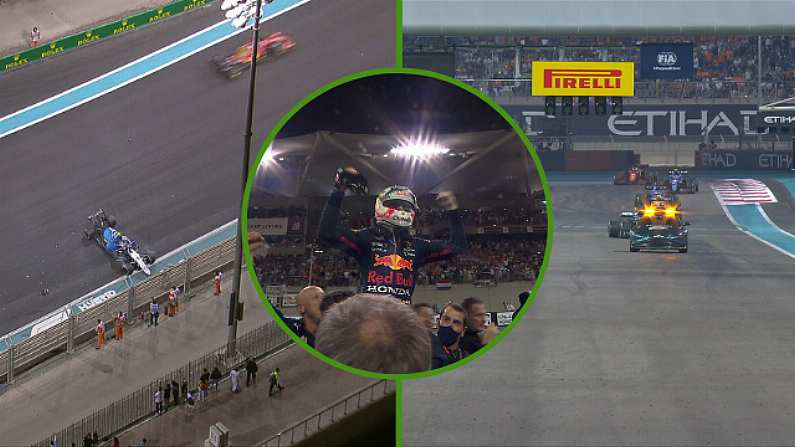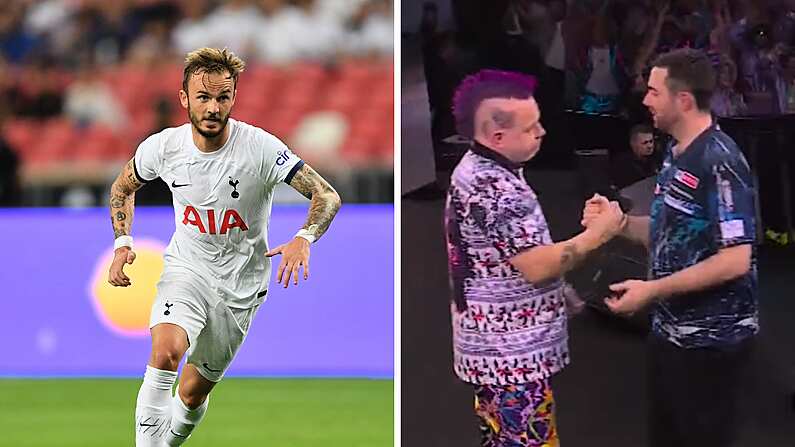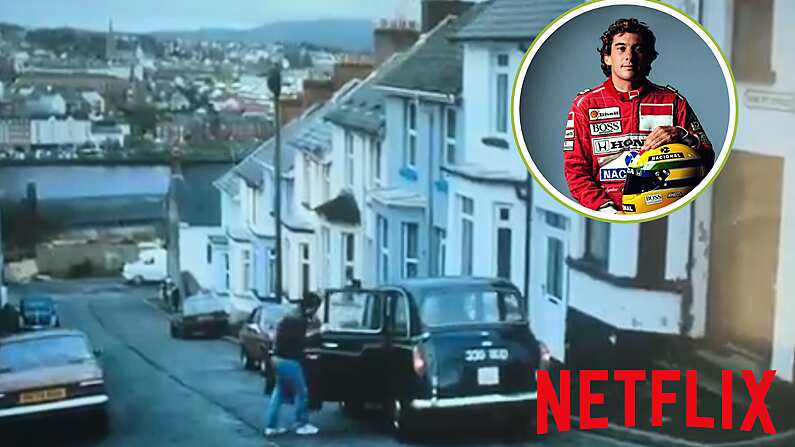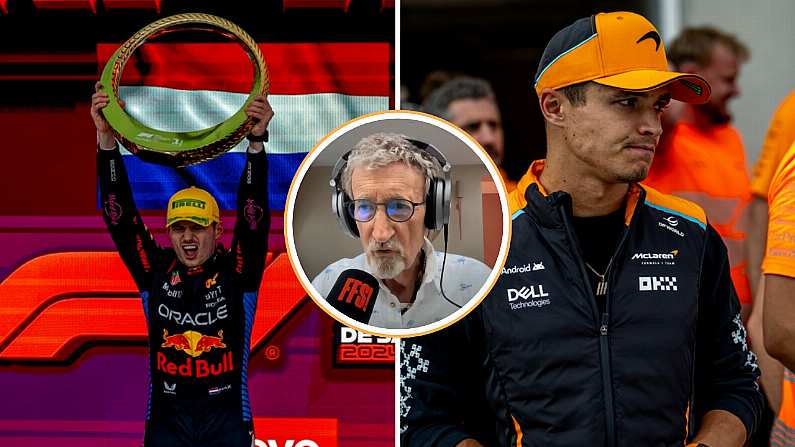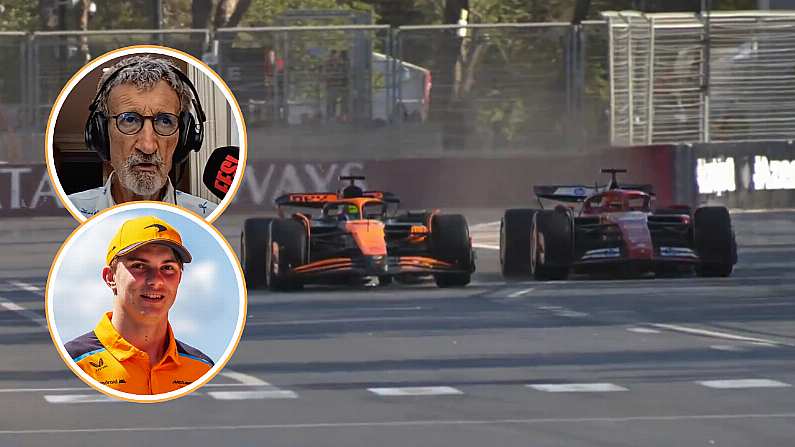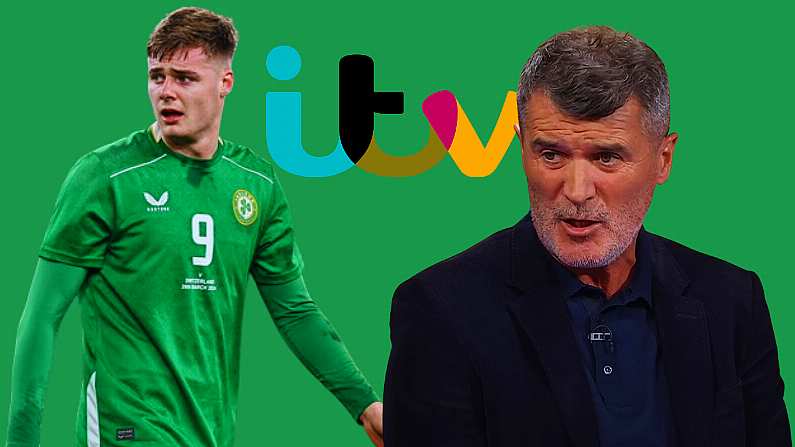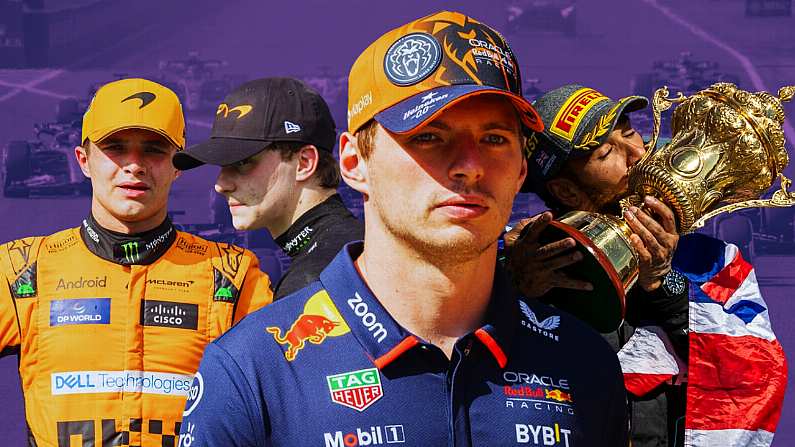Have you caught your breath yet? The Abu Dhabi Grand Prix delivered an explosive conclusion to the 2021 title fight, as the battle between Max Verstappen and Lewis Hamilton came down to the last lap of the last race.
The final lap pass by Verstappen was peak sporting drama - but the circumstances that brought it about were controversial, to say the least.
There were plenty of first-time viewers today, so we took a look to explain all of the drama at the season finale.
F1 explained: why the ending of the Abu Dhabi GP was so controversial
Let's break it down blow-by-blow. It's worth giving some quick context as to the first big stewarding decision of the day, when Hamilton and Verstappen went wheel to wheel on the opening lap.
After Hamilton took the lead at the first corner, Verstappen stayed on his tail and followed him along the back straight. The Dutchman came from a long way back and planted his car on the apex of turn five, blocking Hamilton's path.
The Mercedes driver decided to cut turn six to avoid a collision, but kept the lead as a result.
LIGHTS OUT!! 🚥
Hamilton gets in front! 💨
But he goes wheel-to-wheel with Verstappen!
📺 Sky Sports F1
📲 https://t.co/TJHGarBsm4
#️⃣ #SkyF1 | #F1 | #AbuDhabiGP pic.twitter.com/I9AYVOk4G5— Sky Sports F1 (@SkySportsF1) December 12, 2021
The stewards (the F1 equivalent of a refereeing team) decided not to penalise Hamilton for going off the track and gaining an advantage. Their reasoning was that Hamilton had slowed down after cutting the corner and had given up any lasting advantage gained.
Though Red Bull argued with the decision, it was ultimately a fair call. There was no way for Hamilton to make the corner with Verstappen planted down the inside of the corner, and any pass from Verstappen would have also necessitated either contact or forcing the Brit off track.
Now, on to the chaos at the end of the race.
Hamilton ran an excellent race and was leading by 10+ seconds as the Grand Prix neared its conclusion. When Williams driver Nicolas Latifi crashed out under the circuit hotel with just five laps to go, the race stewards decided to deploy the safety car to neutralise the race.
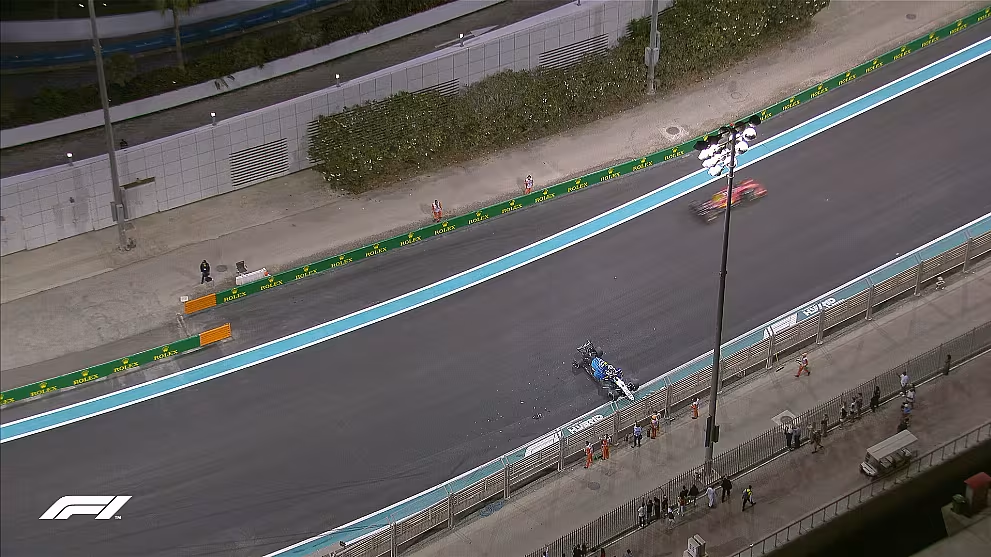
Nicolas Latifi's crash required a safety car to clear away his Williams car. Photo: @F1 on Twitter
When the safety car is brought out, all the cars on track are bunched up and forced to drive to a slower pace. This removes any gaps drivers may have built up (i.e., Hamilton's 10+ second lead over Verstappen) and has the drivers follow a high-end sports car in a bunched up pack.
This is done to allow the marshals a safe gap on track to remove stricken vehicles - in this case, Latifi's Williams.
Because all the cars on track are driving to a slow pace, a safety car period is an opportune time to make a pitstop, as you'll lose less time driving under the pitlane speed limit.
With Hamilton and Mercedes deciding to prioritise track position and stay out on his worn hard tyres, Verstappen and Red Bull gambled on pitting for the soft tyres. Fresh, quicker tyres gave them the best chance of making a pass on track.
The issue was that the time taken to clear away the Williams car meant that the F1 directors running out of laps to get the race restarted - as race director Michael Masi explained to Red Bull boss Christian Horner during the race.
Hamilton and Verstappen had also both lapped several cars, and there were five cars between them on track when the field fully bunched up behind the safety car.
There is a loop in the regulations which allows the stewards to instruct those lapped drivers to overtake and race on ahead as the safety car period is coming to an end, in an effort to get drivers back to the correct on-track position.
LAP 56/58
Will there be time for the marshals to safely remove Latifi's car from the track before Lap 58?
Extraordinary tension here in Abu Dhabi with the championship still up for grabs in the final minutes of the season#AbuDhabiGP 🇦🇪 #F1 pic.twitter.com/gDeisjgNKv— Formula 1 (@F1) December 12, 2021
Initially, the race stewards opted not to allow the lapped cars to overtake. This decision was likely taken due to the sheer amount of drivers who had been lapped - Hamilton had lapped some drivers in the top ten. Though this would have led to the race restarting earlier, it would have left Verstappen with a big gap to Hamilton on the restart.
Ultimately, the stewards made a last-minute decision to allow some of the lapped cars to overtake. The drivers who were between Hamilton in first and Verstappen in second were allowed to unlap themselves, and the race was set to restart at the end of lap 57 of 58.
While the final lap got underway, team radio played of Mercedes complaining to the FIA over the decision to allow only some of the lapped cars through, as team boss Toto Wolff said that the call was "not right".
Ultimately, a make-or-break move from Verstappen sealed the title on lap 58 of 58 and, after holding the Mercedes back on the back straight, the Dutchman claimed his maiden title.
MAX VERSTAPPEN SNATCHES THE WIN ON THE LAST LAP!! 😰
A FIRST WORLD CHAMPIONSHIP FOR THE RED BULL DRIVER 🏆
📺 Sky Sports F1
📲 https://t.co/TJHGarBsm4
#️⃣ #SkyF1 | #F1 | #AbuDhabiGP pic.twitter.com/XyGs0ENZA6— Sky Sports F1 (@SkySportsF1) December 12, 2021
Hopefully that clears up just how the race was allowed to restart. The reasons why this was a controversial call are far more complex and come down to the official regulations of the sport.
The rules state that the decision to allow drivers to unlap themselves has to be an all or nothing call - you can't let some of the drivers unlap themselves and not others. Either all lapped drivers are allowed to overtake, or none. As well, the rules state that at least one more lap under safety car conditions should be completed after the instruction to unlap is made.
It's all very complex, and not at all what we want to be discussing in the aftermath of a gripping title fight, but that's the best shot we can give at the first edition of "F1 explained". The call to restart inarguably cost Hamilton the championship, as Sky pundit Jenson Button said in the post-race broadcast, but whether or not it was an unjust call is a debate that will rage on.
For now, Max Verstappen is a more than worthy Formula 1 world champion, and it's unlikely that will change. But what would the finale to this most controversial of seasons be without a bit of controversy?

